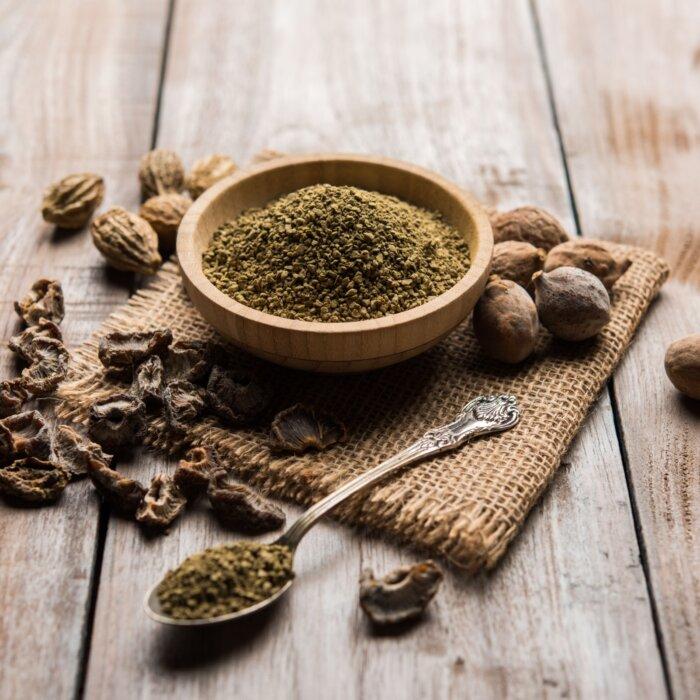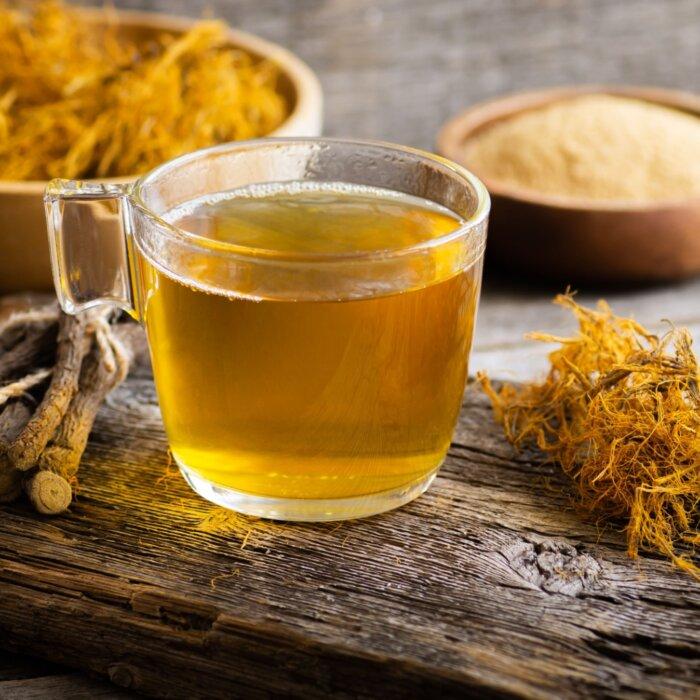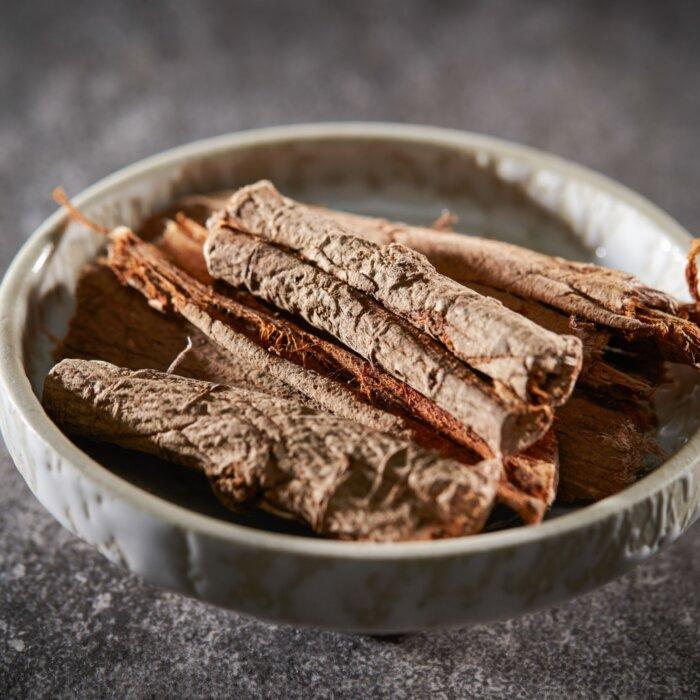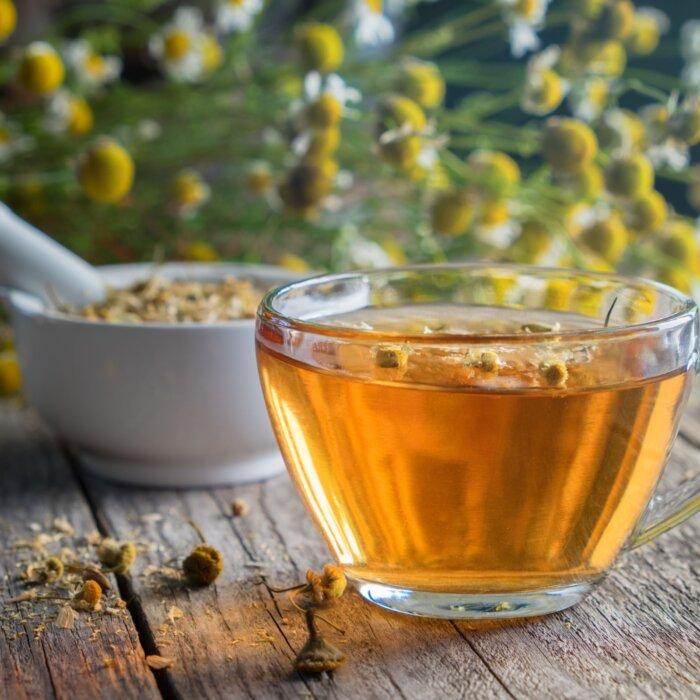With a sweet taste and potent properties, licorice root is a strong herbal ally for digestion.
In traditional Chinese medicine (TCM), licorice root is used for balancing qi—life force—specifically in the spleen, which is considered vital for the whole body and the digestive system. Licorice root has long been recognized in Eastern and Western medicine for its specific anti-inflammatory gastrointestinal uses in treating liver diseases, cancer, heartburn, ulcers, and stomach pain.
Calming IBD
Researchers are interested in the connection between the herb and IBD because licorice root acts as a demulcent, creating a coating on mucus membranes to soothe inflammation. It also acts as an expectorant, helping decrease phlegm. Mucus defects play a role in IBD, according to a 2014 study in Inflammatory Bowel Diseases.Inflammation is part of the natural healing process in acute illnesses and injuries, but ongoing systemic inflammation can be the result of lifestyle factors such as diet, viruses, aging, and toxins.
According to the 2022 review, IBD and colorectal cancer rates are growing and contribute to a large number of deaths annually, creating a need for more therapeutic solutions. IBD patients also face a higher risk of cancer.
“The discovery of novel drugs for the treatment of intestinal diseases is urgently needed,” the review stated. “Licorice (Glycyrrhiza glabra) has been largely used for thousands of years in traditional Chinese medicine.
Powerful Compounds
The licorice plant is native to Asia and Europe and has about 400 compounds, including approximately 300 flavonoids, according to a 2021 review in the journal Plants, which noted that licorice is “one of the most extensively examined herbal drugs” with “solid pharmacological properties.”Twelve licorice flavonoids have been found to inhibit cancer growth by causing apoptosis, or cell death. The cellular-level actions of licorice root may prevent tissue damage in autoimmune diseases and other inflammatory disorders, the review stated.
The review highlighted another licorice compound called isoliquiritigenin, which halts cancer using a combination of mechanisms, including apoptosis and autophagy. Autophagy is a cellular process that recycles cellular debris for cellular efficiency. Isoliquiritigenin also halts the growth of new blood vessels, called anti-angiogenesis, a common role of some cancer drugs.
Licorice and the Liver
Licorice has traditionally been used to treat liver cancer and liver diseases, which are both on the rise because of obesity, poor diet, and other lifestyle factors. The review in Plants specifically pointed out that licorice could be beneficial for livers damaged by alcohol, drug overdose, chemotherapy drugs, environmental pollutants, and other chemicals that contribute to diseases such as cirrhosis, hepatitis, and fatty liver disease.“The liver conducts several critical processes (metabolism, detoxification, and bile production),” the review stated. “It protects against foreign chemical exposure by detoxifying and removing them.
“Because the liver is responsible for the metabolism and elimination of medicines from the body, a healthy liver is critical to general health.”
The review noted that licorice is also a TCM remedy for liver disease.
Other Gut Conditions
The antimicrobial properties of licorice could also have a powerful effect on many other microbial conditions affecting gut health that involve high levels of bacteria, viruses, and fungi.The 2022 review summarizes several promising studies on licorice’s potential to stop the growth of infection-causing microbes. The dosage and sourcing used in the studies varied. They were conducted in vitro, meaning outside the human body.
Helicobacter pylori (H. pylori) also responds well to licorice. H. pylori overgrowth causes peptic ulcers and can lead to gastric cancer.
“Licorice root is really loved for ulcers and for heartburn—whenever there’s a burning, painful sensation—because it’s very cooling and soothing and very mucilaginous in nature,” herbalist Rosalee de la Forêt told The Epoch Times.
Both the licorice and bismuth treatment approaches worked effectively on pain and healing tissue, confirmed by exams. The study authors noted that research has shown licorice may be useful for killing all H. pylori strains rapidly and alleviating symptoms of ulcers—without adverse effects on other healthy gastrointestinal flora.
Danger in Dosing
Many studies on licorice caution that dosing hasn’t been specifically clarified in the research—different studies use varied forms, doses, and types of licorice that make it hard for consumers to navigate. Because licorice is also used in a number of food products for flavoring, it’s important for consumers to be mindful of their total daily dosage.“If we take it in large doses every single day, some people are pretty susceptible to developing high blood pressure from that,” de la Forêt said. “If somebody has a tendency to high blood pressure, and even if they don’t, I’d be cautious of taking more than 3 [grams] to 5 grams of licorice root every day.”
Dried licorice root can be found in powder, capsule, tablet, or liquid form. Some extracts do not contain glycyrrhizin—removed to cut down on the side effects—and those are referred to as “deglycyrrhizinated” licorice.
De la Forêt said deglycyrrhizinated teas are often the safest bet for long-term use.
Another way to safely use licorice root is to “harmonize it with other herbs,” according to Lily Choi, an acupuncture and traditional Chinese medicine practitioner who specializes in pain management.
Spotlight on the Spleen
Choi told The Epoch Times that in TCM, spleen deficiencies are related to poor metabolism, low energy, and excess phlegm. In Western medicine, the spleen is considered unnecessary at worst and a lymphatic organ for filtering out toxins at best. It is more significant in Eastern teachings.Licorice root is highly regarded in TCM, Choi said, because it’s among the herbs that can strengthen the spleen.
“A lot of times when people have gut imbalances, they have weak spleens,” Choi said. “It’s a very powerful herb, but we always say that single herbs should be used with caution and not every day. If you want to use it every day, it would be best used in a formula.”
She suggested using it as a tincture blend or as a tea, to be taken every two to three days. Licorice root could also be mixed with goji berry, chrysanthemum, or lotus—all of which have benefits for digestive health, according to Choi.
Blending licorice root with other herbs can mask unpleasant flavors, too.
“An herb like licorice root is good to sprinkle into your routine,” Choi said. “It harmonizes all herbs, and allows the herbs to go where they need to go in the body.”










